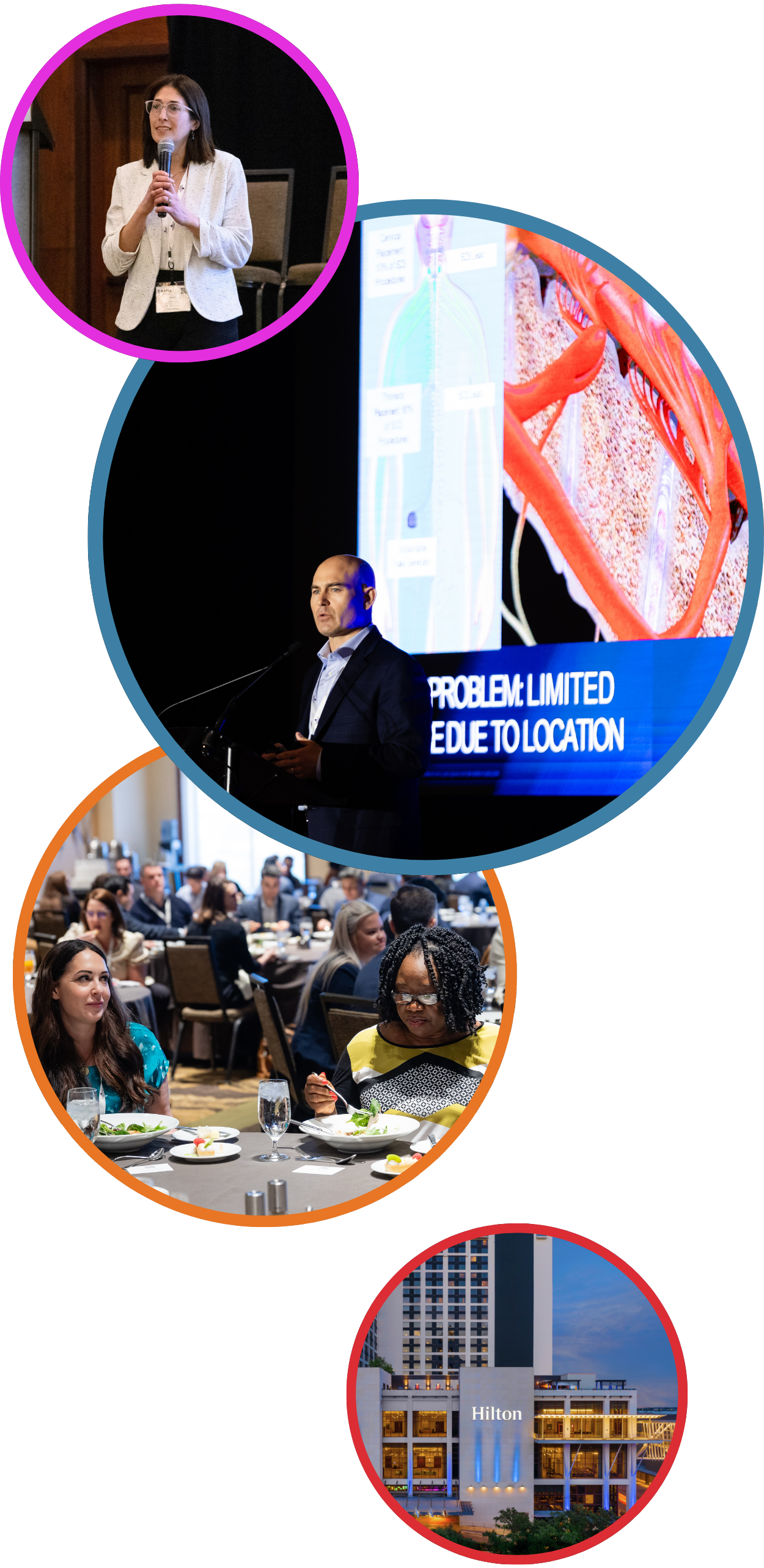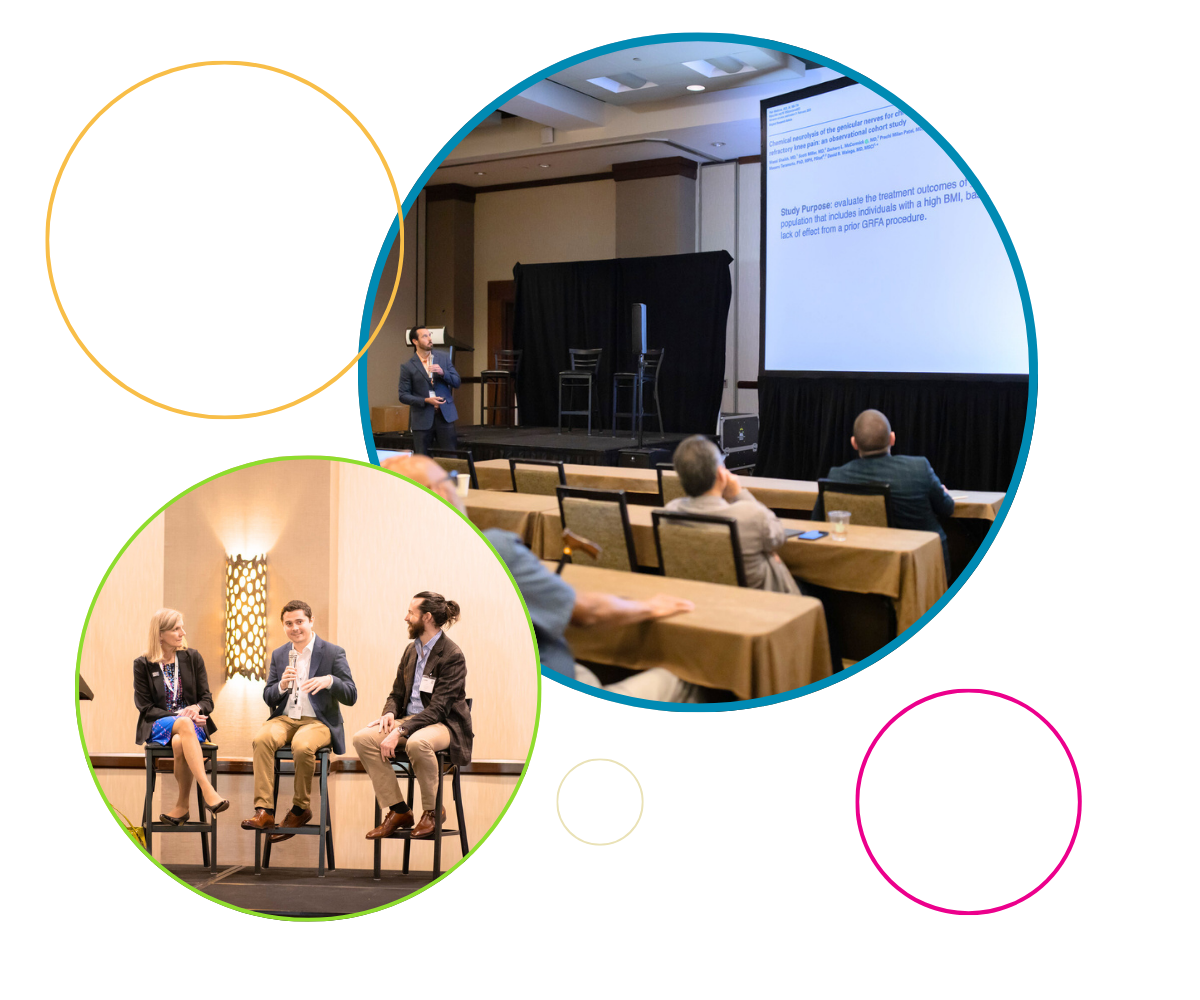Call for Education Session Proposals
Call for Education Session Proposals is Now Live
 The submission deadline for this call for education session proposals: September 7, 2024, at 11:59 PM EDT.
The submission deadline for this call for education session proposals: September 7, 2024, at 11:59 PM EDT.
Please read the information below before submitting an education session proposal.
When you are ready to submit a proposal, click the link below.
The Academy is rebranding its Annual Meeting to PainConnect.
Our PainConnect event offers a patient-centered approach to pain care tailored to meet the diverse needs of healthcare professionals. PainConnect fosters a dynamic learning environment, emphasizing holistic care and innovation. Submit your session today to be part of the team transforming pain care through interdisciplinary collaboration and education.
Proposals should be innovative, interdisciplinary, and relevant to one of the broader categories defined below. Presentations selected for the PainConnect 2025 annual meeting will seek to improve the evaluation, diagnosis, and multidisciplinary inter-professional treatment for pain disorders. Methodologies to assess and improve the delivery and practice of evidence-based pain care throughout the healthcare continuum and changing healthcare environment should also be included.
The best and most innovative proposals will be accepted. Notification letters will be sent in October.
Proposals must include a descriptive element of audience engagement (for example, discussion using case-based scenarios, flipping the curriculum, etc.) Friday, April 4 – Sunday, April 6, 2025, we will feature submitted sessions. All sessions will be presented by current AAPM members.
Proposals should focus on, but are not limited to, the following classifications of pain medicine:
INTERVENTIONAL AND SURGICAL THERAPIES IN PAIN MEDICINE
Examples might include:
- Interdisciplinary pain care.
- Behavioral assessment, indications and patient selection.
- Advances in neuromodulation
- Innovations in Minimally invasive procedures.
- Surgical approaches to pain care.
- Surgical skills training for pain medicine
- Ultrasound-guided procedures in pain management
PHARMACOTHERAPIES
Examples might include:
- Pharmacological approaches to chronic pain, treatment decisions/pathways
- Novel translational or clinical research in pain medicine
PHYSICAL, BEHAVIORAL, AND COGNITIVE THERAPIES

Examples might include:
- Patient selection, outcomes, and cost-effectiveness of chronic pain rehabilitation programs
- Case-based sessions or problem-based learning discussions presented by an interdisciplinary panel with active participation of the attendees
- Treatments using cognitive behavioral therapy, hypnosis or addiction medicine treatments
INTEGRATIVE MEDICINE
Examples might include:
- Outcomes and delivery models for more traditional programs
- Affecting patients’ quality of life (QOL) with chronic pain by incorporating additional treatment teams such as nutritionists, endocrinologists, etc.
- Holistic and/or self-directed patient care.
- Topics in complementary medicine, including acupuncture for pain management
IMAGING & DIAGNOSTIC SCIENCES
Examples might include:
- Diagnosis and treatment planning
- Image to guide treatment and procedures.
- Newer technology used for evaluation or outcomes (e.g. fMRI)
- Sessions such as radiologic interpretations and needle placement views.
- Other diagnostic modalities.
PRACTICE MANAGEMENT
Examples might include:
- Impact of external factors on patient care, such as regulatory, fiscal, legal, and ethical.
- Interaction with insurers, Workers’ Compensation issues, etc.
- implementing web-based and artificial intelligence (AI) pathways to assist with decision-making and/or measuring outcomes.
- CDC Opioid Prescribing Guidelines and how they impact practice and patient care.
- Malpractice cases – a panel might include a clinician as an expert and a lawyer.
- Epidemiology with applications to public health and policy.
- Planning for and implementing value-based pain medicine care.
PAIN CARE FOR SPECIAL POPULATIONS
Examples might include: (bullets)
- Treatments in providing pain care to those patients with physical or mental disabilities, with limited English proficiency, institutionalized individuals, the elderly, children, those from diverse cultures, the transportation-disadvantaged, those who are geographically or culturally isolated or medically/chemically dependent, those who are homeless, among others.
EDUCATING & TRAINING IN PAIN MEDICINE
Examples might include:
- Pain education at all career levels from medical school to post-graduate level.
TRANSLATIONAL & BASIC SCIENCE
Examples might include:
- “Bench to bedside.”
- Current pathways for treatment of specific problems that lead to greatest success
- How your pathways differ from current pathways (provide data to support your outcomes)
- Methodologies in research.
Submission Instructions
 Education Session Proposals for this call can be submitted through September 7 at 11:59 p.m. EDT. Your proposal will automatically be sent to the AAPM education department office after you have completed all forms and clicked the “SUBMIT NOW for review” button. Hardcopy proposals will not be accepted.
Education Session Proposals for this call can be submitted through September 7 at 11:59 p.m. EDT. Your proposal will automatically be sent to the AAPM education department office after you have completed all forms and clicked the “SUBMIT NOW for review” button. Hardcopy proposals will not be accepted.
As you draft your proposal, please consider brevity when choosing session titles. Create ENGAGING presentation titles and publication descriptions. AAPM strongly recommends that all these entries be compelling and/or provocative, with patient care at the center of outcomes.
Acceptance and rejection notices will be sent to all submitters in October 2024.
Note that all proposals are for 60-minute sessions.
Please complete all information requested on the electronic submission form, including the following:
- Session Title. Your session title should be short yet descriptive and attract attendee interest. There is a 125 maximum character limit.
- Submitter/Moderator’s Presentation Title. This is the presentation title you will provide within this session. You will also provide presentation titles for additional faculty later in this submission process. There is a 40-maximum word limit.
- Classification. Choose one from the following based on the descriptions provided above:
- Interventional Therapies
- Pharmacotherapies
- Physical, Behavioral, and Cognitive Therapies
- Integrative and Transdisciplinary Care
- Imaging & Diagnostic Sciences
- Practice Management
- Pain Treatment for Special Patient Populations
- Educating & Training in Pain Medicine
- Translational & Basic Science
- Citations. List a minimum of 3 recent citations to relevant literature to support the content’s contribution to the practice of pain medicine and/or pain medicine psychology (within the last 10 years, cannot include book chapters)
- Off-Label Use. Indicate if off-label use of a drug or product will be addressed in this session.
- Professional Practice Gap. Include 3-5 sentences stating the Professional Practice Gap your proposal aims to address. Please note that this gap is “the difference between health care processes or outcomes observed in practice, and those potentially achievable on the basis of current professional knowledge.” (Maximum 100 words)
- Needs assessment. State the educational need (in terms of knowledge, competence, or performance) that you determined to be the cause of the professional practice gap(s) in the previous question. Explain how this proposal will aim to narrow the gap between ‘current practice’ and ‘optimal practice.’ Your proposal must demonstrate increased knowledge and/or competence and/or performance. (Maximum 50 words in each category)
- Expected outcomes. Include 1-2 sentences stating what this program is designed to change regarding learners’ competence or performance or patient outcomes. (maximum 100 words)
- Educational learning objectives**. List 3 key measurable learning objectives designed to change competence, performance, or patient outcomes. Attendees will rate your session based on how well you and your co-faculty meet your objectives. This document will provide assistance in choosing verbs for use in formulating measurable objectives. (Minimum of three objectives are required.) (maximum 50 words per objective)
- Proposal text body. Abstracts should be no more than 350 words and describe the content of your presentation. Do not include session or presentation titles, moderators, or faculty, as this information will be entered based on other fields in the submission process. Important note: Be sure to include a descriptive element of audience engagement at the end of this field (for example, a discussion using case-based scenarios or a web-based audience response system.)
- Session publication description. Enter how you would like your session description to appear in all AAPM publications if your proposal is accepted. This description should be 50 words or less. Please check spelling and word count before entering proposal text.
- Literature references. List 2-3 COMPLETE literature references in support of all clinical or practice management recommendations. (Minimum of two COMPLETE references are required.)
- Relevant Financial Relationships. All submitters/moderators and faculty are required to disclose their relevant financial relationships (any amount occurring within the past 12 months that creates a conflict of interest.) As an ACCME-accredited provider, AAPM considers financial relationships to create actual conflicts of interest in CME when individuals have a financial relationship with a commercial interest and the opportunity to affect the content of CME about the products or services of that commercial interest. The submitter will disclose this information to submit the proposal. Identified co-faculty will receive emails requesting disclosure information by the deadline proposal submission date. Follow up with your faculty to ensure that they complete this requirement. An individual who refuses to disclose relevant financial relationships will be disqualified from being a planning committee member, a teacher, or an author of CME, and cannot have control of, or responsibility for, the development, management, presentation or evaluation of the CME activity.
- Guest Faculty. As the submitter, you will serve as the session’s moderator and presenter. You can add two additional faculty members. Do not add additional faculty within other fields to this proposal. Each presentation title has a maximum 40-word limit. Please note: AAPM education session proposals cannot be initiated by members of industry. Moderators and faculty must not receive support from industry for participation in the proposed submission.
- Session space is limited, and the AAPM PainConnect Education Forum sessions are available to presenters with a current membership. Membership must be current to be accepted and must be current through the April 2025 Annual Meeting.
PainConnect Education Open Forum/Guest Faculty will receive a reduced registration fee of $450.





